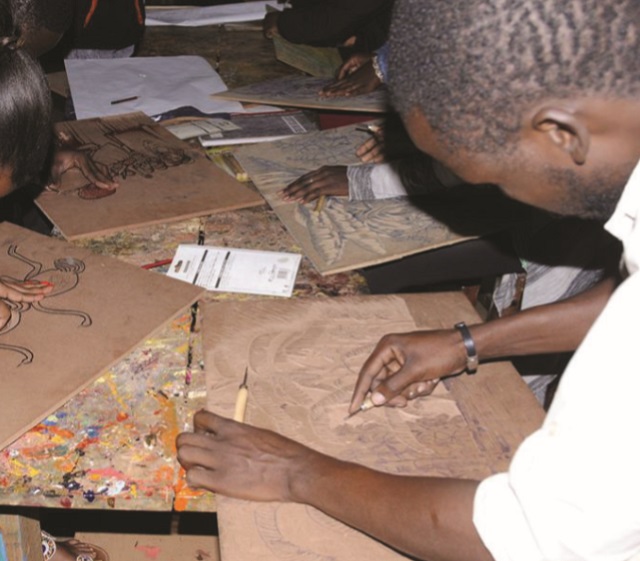
Nagenda International Academy of Art and Design emphasises self- sustainability
Kampala, Uganda | DOMINIC MUWANGUZI | Only a handful of university art graduates wind up in full practice on the local art scene. So where do the rest end up? In an average class of 60 students, only about seven or ten emerge as artists, and mostly as graphic and fashion designers.
What explains the reality that many go into business, remain unemployed, or go back to school to switch courses?
Some point at how art is taught; the approach is hypothetical and does not give opportunity to students to get hands on skills. Many do not relate with the community where they will end up working. Their art training creates problems yet is should be solving problems.
The Nagenda International Academy of Art and Design (NIAAD) wants to change that by emphasising hands- on –skills and collaborative projects. This, they believe, makes art teaching and learning more practical and holistic rather than ideal.
Each student engages with the community for at least three weeks while undertaking a specific project under the theme of problem solving. Learning outside the classroom space stimulates creativity and innovation. Skills and independent thinking develops. The learner is trained to create art responding to the needs of the community. For example, they produce drawings, flyers and brochures for area schools and commissioned artworks for towns and cities.
Community participation is critical, and takes two forms; firstly, the local community becomes a source of ideas and materials the students integrate in their learning or art making processes. Environment sustainability in the community requires students to make art which is environment friendly; involves waste materials-synthetic and organic- from local households that are recycled into functional art such as fashion accessories, jewelry and fabrics, and stained glass mural paintings.
Secondly, the collaboration with continental and international institutions like University of Art and Design Education Zurich enable students to see art training beyond the usual academic qualifications like certificates, diplomas and degrees, but as a medium of interacting with the community and its needs.
Derrick Kitto, a lecturer at the Academy teaches Visual Communications Design using audio recordings of black students from Wits University, South Africa. They share personal experiences on racism and poverty in their neighbourhoods to expose Ugandan students to the real world. They are compelled to think of solutions.
“It is a process that involves the art students unlearning what they have already learnt and achieving a more realistic image of the world that they live in. Unfortunately, theoretical art education does not facilitate such experience,” says Kitto.
The school also uses Affirmative Art, with a laboratory open for students to discover their full potential through drawing their dream- what they want to achieve in life- on paper.
“It assists in our self –discovery as students,” says Juliet Murawingwa.
NIAAD is located in Namulanda, approximately 20Km from Kampala City, on Entebbe Road. It is a tertiary institution registered by the National Council of Higher Learning.
 The Independent Uganda: You get the Truth we Pay the Price
The Independent Uganda: You get the Truth we Pay the Price


